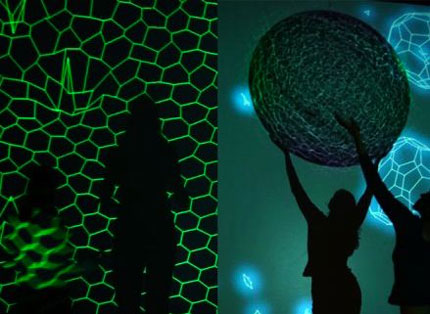Abstract
Since the 1920s when ecologists began studying food chains, recognition of networks became essential to many scholars in different forms. Cyberneticists in particular tried to understand the brain as a neural network and to analyze patterns in the enormously complex structure of the brain, containing about 10 billion nerve cells (neurons), which are interlinked in a vast network through 1,000 billion junctions (synapses). The whole brain can be divided into sub-networks that communicate with each other, resulting in intricate patterns of intertwined webs and networks nesting within larger networks. Comparisons of the human brain to the global interconnected network abound, particularly since the boom of the Internet.
Looking at patterns and geometric forms that appear repeatedly in nature allows for some exciting possibilities for conceptualization of projects that actively involve audiences in social environments. For instance, hexagons appear in beehives, are used in the technological infrastructure of cellular phone systems and are the main shape of the structure of buckyballs, the molecule that has helped launch nano-science. This new science has the potential to change everything around us and pushes the limits of our rational minds - working at the level of atoms and molecules, using the measure of a nanometer -- a billionth of a meter, about 1/80,000 of the diameter of a human hair, or 10 times the diameter of a hydrogen atom. This talk will look at work that addressed some of these ideas and led up to the current collaborative project exploring nano dreams and nightmares.
Bio
Victoria Vesna is an artist, professor and chair of the department of Design| Media Arts at the UCLA School of the Arts. Her work can be defined as experimental research that resides in between disciplines and technologies. She explores how communication technologies effect collective behavior and how perceptions of identity shift in relation to scientific innovation. She is co-director with Katherine Hayles and Jim Gimzewski of SINAPSE, a center that promotes transdisciplinary dialogue and collaboration. Currently she is focused on an ongoing collaborative project, 'zero@wavefunction: nano dreams and nightmares'.
-- As of 10/21/02
